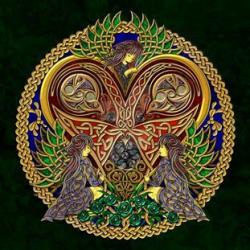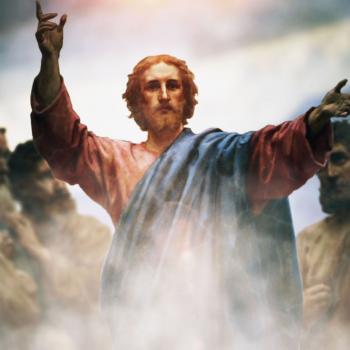 There is a legend about a conversation that occurred between St. Columbanus and the Pope. The Pope had asked Columbanus to tell him where he hailed from. Columbanus’ reply? “I am an inhabitant of the worlds edge.” Celtic Theology was forged on the edge of society. It was grown in a land seen as the fringe of modern Roman society. The central Roman government, and sometimes the Roman church looked out to the edges of society and considered its cultures less than Roman culture. Like many of the “great” societies, Rome looked out on their neighbors as the lesser peoples. The Empire, and the Church, was the standard of the world in their eyes and the peripheral were simply in need of guidance by them.
There is a legend about a conversation that occurred between St. Columbanus and the Pope. The Pope had asked Columbanus to tell him where he hailed from. Columbanus’ reply? “I am an inhabitant of the worlds edge.” Celtic Theology was forged on the edge of society. It was grown in a land seen as the fringe of modern Roman society. The central Roman government, and sometimes the Roman church looked out to the edges of society and considered its cultures less than Roman culture. Like many of the “great” societies, Rome looked out on their neighbors as the lesser peoples. The Empire, and the Church, was the standard of the world in their eyes and the peripheral were simply in need of guidance by them.
Jesus Lived on the Edge
But Like Celtic Theology, Jesus Himself lived on the peripheral. Not only did He live and operate there, but Jesus also continually explained that the edges of society were paradoxically central. If we look at the major occurrences and miracles in the Bible, we find that they consistently occur at the boundaries. Jesus operated on the edge, and therefore considered the edge the center. He ate with the broken on the edge. Jesus healed the sick on the edge. The God of the universe was crucified because of His love for those on the edge. In truth the boundaries of faith can only be pushed from the edge.
The Bible was lived on the Edge
A consistent theme in the Bible is the paradox of the edge being the center of Gods movement. Moses had his vision of the burning bush in the middle of nowhere. Jacob’s vision occurred in the desert. It is in the deserts of life where God consistently fulfills the promises God has made. In the desert, away from those things “civilized” peoples consider important or sacred is where we find God.
Moving From Center Christ to Center Mass
In the modern world we seem to be herded toward the center of our societies en masse. The things society considers central is what increasingly matters to Christians. We want our pastors to be amazing speakers. Church is now more concerned with looking the part of an attractive venue than being the hands and feet of Christ. We have bought the lie of consumerism as an appropriate church model. Instead of reflecting Christ into culture, we attempt to reflect culture unto Christ. Instead of operating on the edges we take on the ideas of empire and look on the edges with contempt as “those people”.
Looking on the edges as “others” has never been a part of the Christian Gospel. Celtic theology is no different. Celtic Christianity thrives on the boundaries and in life’s deserts. They were, and are still found on beaches praying, in isolated monasteries celebrating. You can find them in many big cities, sitting alone in meaningful prayer and contemplations. The Celts understood the centrality of the edge.
The Edge is a Moving Target
Celtic Christianity also understands the edge as a moving target. We were never meant to be idle but called to both spiritually and physically move. We were made for a journey with Christ, bringing Christ as the center away from what the world sees as central. You see, as we move with Jesus as the center of our life toward the edges, the divine mystery occurs. When we carry Jesus as our center to the edge, the edge becomes the center, wherever that may be.










